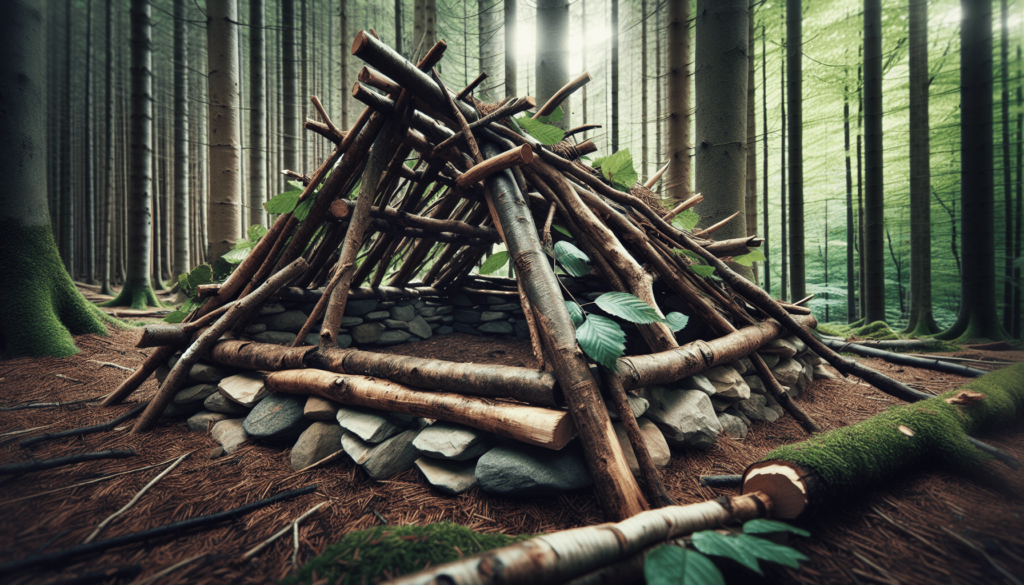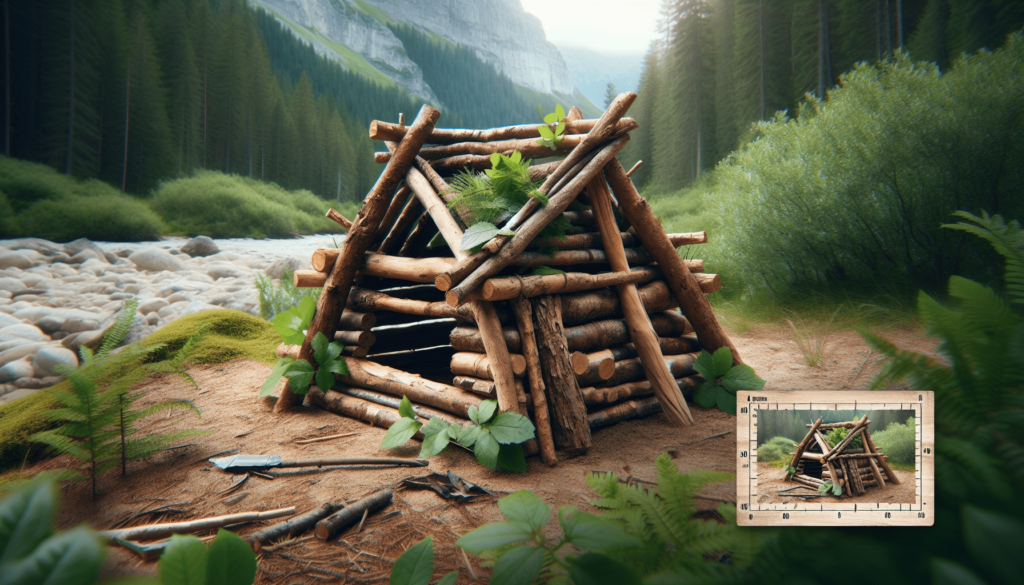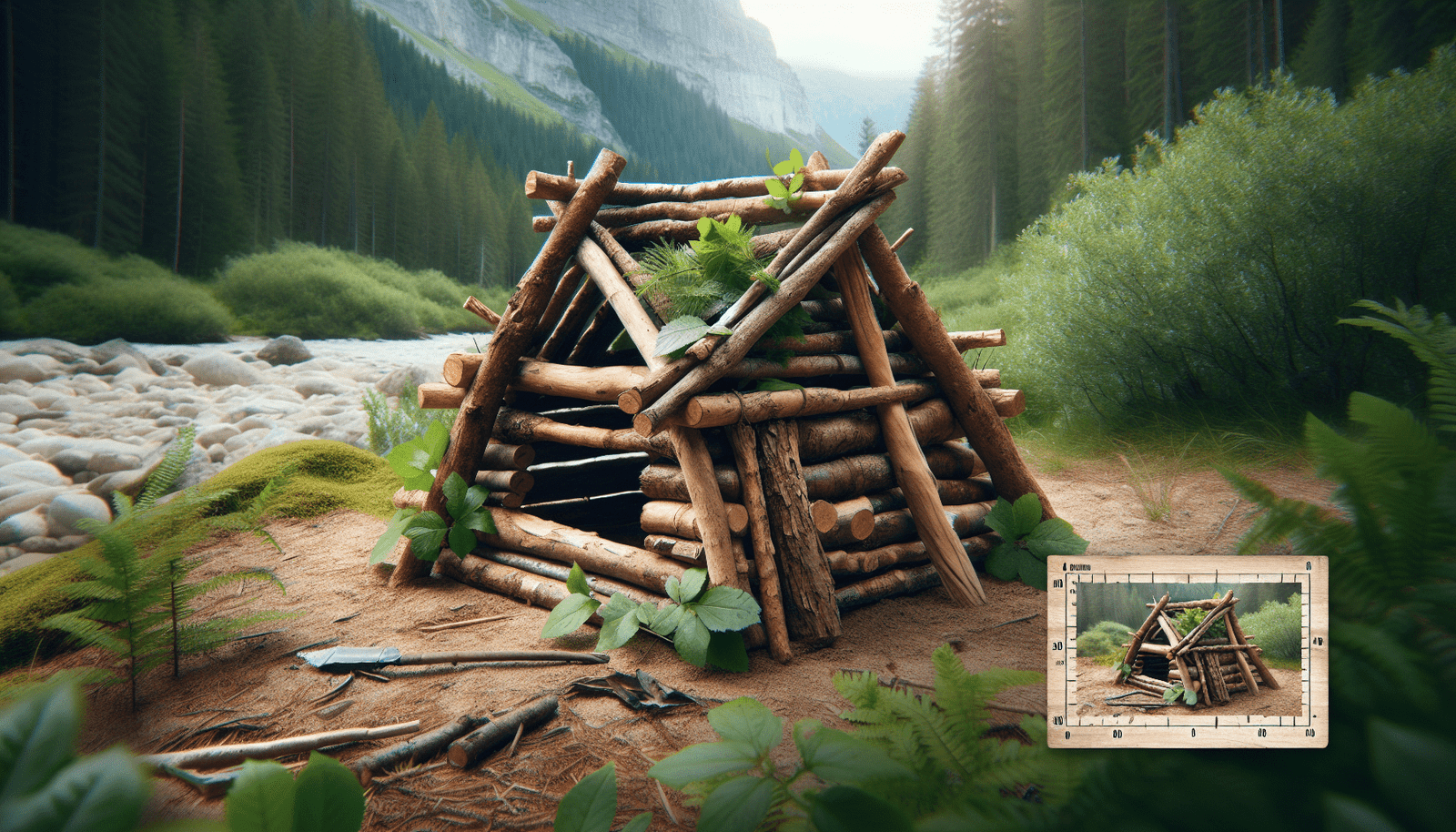Imagine embarking on an incredible off-grid adventure where your backyard turns into a self-sufficient haven in the woods. Picture a thriving survival garden, overflowed with fresh produce, and your newfound knowledge of identifying wild plants for sustenance. You become your family’s superhero, armed with disaster preparedness skills to care for your loved ones and pets in emergencies. DIY projects like homemade water filters and solar power systems ensure that you’re self-reliant, while younger explorers master basic survival skills. But it doesn’t stop there; you navigate wilderness, learn emergency medical techniques, and gain the confidence to confront unexpected situations head-on. This journey isn’t about doomsday; it’s about embracing self-reliance, connecting with nature, and empowering yourself and your loved ones with valuable skills. So, are you ready to embark on your own off-grid adventure?

Choosing the Right Location
When it comes to building a wilderness shelter, choosing the right location is crucial. Understanding the terrain is the first step in ensuring your shelter’s stability and durability. Take note of the elevation, slope, and any potential hazards such as loose rocks or steep cliffs. By familiarizing yourself with the terrain, you can select a safe and suitable spot for your shelter.
Finding level ground is essential for a comfortable shelter. Look for a flat surface that is free from rocks, tree roots, or any other obstructions. This will make it easier to set up your shelter and provide a more stable foundation. Additionally, a level ground can prevent any potential water pooling inside your shelter during rainfall.
Evaluating natural resources in the area is also important. Look for nearby water sources, such as rivers or lakes, to ensure easy access to clean water. Take note of the availability of firewood and other natural materials that you may need for your shelter construction. Being aware of the resources around you will help in planning and preparing for your wilderness adventure.
Gathering Necessary Tools and Materials
Before you start building your shelter, it’s essential to gather the necessary tools and materials. These will ensure that your construction process goes smoothly and that your shelter is properly built.
Some essential tools for shelter building include a survival knife, a sturdy hatchet, a saw, a hammer, and a multitool. These tools will help you cut branches, shape wood, drive nails, and perform various tasks necessary for constructing your shelter.
Collecting natural materials is another crucial step. Look for sturdy branches, leaves, and vines that can be used in constructing your shelter. Pay attention to the quality and strength of the materials as you gather them. It’s important to choose materials that are durable and can withstand the elements.
Before you start building, make sure to prepare the site properly. Clear the area of any debris, fallen branches, or other obstructions that may interfere with your construction process. This will create a clean and organized workspace, making it easier to assemble your shelter.
Constructing a Basic Shelter
Choosing a shelter design that suits your needs and the available resources is an important decision. There are various types of shelters you can build, including lean-to shelters and debris huts.
A lean-to shelter is a simple and effective design that consists of a slanted roof supported by one or more branches. This design provides protection from the elements and is relatively quick and easy to construct.
Creating a debris hut involves building a small framework with branches and covering it with leaves, sticks, and other natural materials. This design offers more insulation and privacy, making it suitable for longer-term stays in the wilderness.
Consider the available resources and the specific requirements of your wilderness adventure when choosing your shelter design.
Building a lean-to shelter involves selecting two sturdy trees or using poles as the main support for the shelter. Lean branches against the support structure at an angle to form the roof, and cover them with leaves, branches, or additional natural materials for insulation.
Creating a debris hut starts with forming a small framework with large branches or logs. Add smaller branches and sticks to create a sturdy structure. Cover the framework with leaves, moss, or other natural materials, ensuring that there are no gaps for rain or wind to enter.
Both designs require careful construction and attention to detail to ensure stability and durability.
Making the Shelter Waterproof
To ensure that your shelter withstands rain and other wet conditions, it’s important to make it waterproof. Using natural materials for insulation is an effective way to keep the interior of your shelter dry and comfortable.
Collect leaves, pine needles, or straw and create a layer of insulation on the inside of your shelter. This layer acts as a barrier and helps to prevent moisture from seeping through.
Adding a waterproof layer is essential for keeping water out of your shelter. Use large leaves, a tarp, or a poncho to cover the roof of your shelter. Ensure that the waterproof layer overlaps the sides of the shelter to redirect any rainwater away from the interior.
Creating a thatched roof is another option for waterproofing your shelter. Gather long, flexible branches or grass and weave them together to form a dense, waterproof layer on top of your shelter. This method provides additional protection from rain and other elements.

Building a Fire Pit and Lighting a Fire
Having a fire pit is essential for cooking, keeping warm, and providing light during your wilderness stay. It’s important to choose the right location for your fire pit to ensure safety and practicality.
Select an open area that is away from any overhanging branches or flammable materials. Clear the area around the fire pit to prevent accidental spreading of fire. Always be mindful of the wind direction and make sure the fire pit is not placed in a spot where the wind could carry embers towards your shelter or other potentially flammable objects.
Gathering firewood and tinder is necessary to start and maintain a fire. Look for dead branches, twigs, and leaves that are dry and easily combustible. Having a mix of different sizes of firewood, from small kindling to larger logs, will help maintain a steady fire.
Proper fire safety measures should always be followed. Keep a bucket of water nearby in case of emergencies and never leave the fire unattended. Ensure the fire is completely extinguished before leaving the area or going to sleep.
By following these steps, you can safely build a fire pit and light a fire for your wilderness shelter.
Finding and Purifying Water
Access to clean water is crucial for survival in the wilderness. Knowing how to locate nearby water sources and purify the water is essential knowledge.
Locating nearby water sources involves exploring the surrounding area for rivers, lakes, or streams. Look for flowing water rather than stagnant sources, as flowing water is generally cleaner.
Methods for water purification are important to ensure that the water you collect is safe to drink. Boiling water is one of the simplest and most effective methods. Bring the water to a rolling boil for at least one minute to kill any bacteria or pathogens.
Building a homemade water filter is another option. This involves creating a filter using layers of sand, charcoal, and gravel. Pour the collected water through the filter to remove impurities and contaminants.
Remember, even if the water appears clear, it’s always safer to purify it before consumption to prevent any potential water-borne illnesses.
Creating Emergency Signaling Techniques
In the event of an emergency, it’s crucial to have effective signaling techniques to attract attention and seek help. Here are a few methods you can use:
Using a signal mirror is a simple and effective way to attract attention. Hold the mirror at an angle towards the sun and aim the reflection towards the desired location. This reflection can be visible from a distance, increasing the chances of being noticed.
Making noise signals is another method to alert others to your presence. Use a whistle, a horn, or even shout loudly to attract attention. Three short bursts of sound or any distinct pattern can be recognized as a distress signal.
Crafting emergency signs involves creating visible markers or signs to communicate your need for help. Use natural materials such as rocks, logs, or branches to spell out words like SOS or create arrows pointing towards your location. These signs can be seen from a distance and increase the chances of being found.
Protecting Against Wildlife
Encounters with wildlife are a possibility when staying in the wilderness. It’s important to identify potential wildlife encounters and take appropriate measures to protect yourself and your shelter.
Identify the wildlife species that inhabit the area you are in. Research their behavior and any potential dangers they may pose. This knowledge will help you anticipate and prevent encounters.
Creating animal deterrents can help keep wildlife away from your shelter. Hang food and garbage high up in trees or use bear canisters to store food safely. Use noise-making devices or create a perimeter with sticks and branches to deter animals from approaching your shelter.
Storing food safely is crucial to prevent attracting wildlife. Keep food in sealed containers or bags that are stored away from your shelter. Avoid cooking and eating near your sleeping area to minimize the scent of food.
Emergency Medical Care
Being prepared for medical emergencies is essential when living in the wilderness. Here are a few basic techniques that can make a difference:
Recognizing and treating heatstroke involves identifying symptoms such as dizziness, rapid heartbeat, and headache. Move the affected person to a shaded area, remove excess clothing, and cool the body by applying wet towels or immersing in water if available. Seek medical help if the symptoms persist.
Dealing with hypothermia requires immediate action. Remove wet clothing and replace with dry layers. Use blankets, heat packs, or body heat to warm the person gradually. It’s important to seek professional medical help as soon as possible.
Basic first aid techniques, such as treating wounds and performing CPR, can also be lifesaving. Carry a first aid kit with essential supplies and familiarize yourself with basic first aid procedures. Knowing how to clean and dress wounds, immobilize fractures, and perform CPR can make a significant difference in emergency situations.
Preparing for the Unforeseen
No matter how well-prepared you are, unforeseen situations can still arise. Being equipped with knowledge and skills to handle these situations is essential for your safety.
Building a raft for water emergencies can help you navigate and reach safety in case of flooding or other water-related emergencies. Gather sturdy branches and vines to construct a simple raft that can support your weight.
Escaping from quicksand requires remaining calm and taking appropriate actions. Avoid making sudden movements that can cause you to sink deeper. Slowly and carefully, lean back and extend your legs to spread your weight. Use objects like sticks or branches to pull yourself out.
Navigating through unfamiliar terrain can be challenging. Use natural landmarks like the sun or stars to determine directions. Carry a compass and learn how to use it effectively. Familiarize yourself with basic navigation techniques to prevent getting lost.
By being prepared for the unforeseen and having the necessary skills, you can confidently navigate through various wilderness situations.
Embarking on an off-grid adventure and building your safe haven in the woods is an empowering experience. By following the steps outlined in this comprehensive guide, you’ll be equipped with the knowledge and skills needed to thrive in the wilderness. From constructing a shelter and lighting a fire to purifying water and navigating through unfamiliar terrain, each section provides valuable information to ensure your safety and well-being. So, are you ready to embrace self-reliance and embark on your own off-grid adventure? Start by exploring the diverse topics in this guide, and soon you’ll discover the freedom and empowerment that come with living off the grid.

